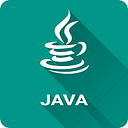Member-only story
Java : Evolution of Java Memory Model since Java 8
Hi All, This story is open to everyone; non-member readers can click this link to read the story.
When I first encountered the Java Memory Model (JMM), I was struck by its complexity and the critical role it plays in ensuring thread safety and consistency in concurrent applications.
Since Java 8, the evolution of the JMM has been a fascinating journey, marked by significant improvements and refinements that have made Java an even more robust and reliable language for modern development.
Today , We will look at how Java Memory Model has evolved with new version of Java after Java 8.
So, Let’s get Started…….
What is Java Virtual Machine (JVM):
The Java Virtual Machine (JVM) is a key component of the Java platform that provides hardware and operating system independence, compact compiled code, and protection against malicious programs.
The JVM operates as an abstract computing machine, with its own instruction set and runtime memory management. The use of a virtual machine is a common approach for programming language…
